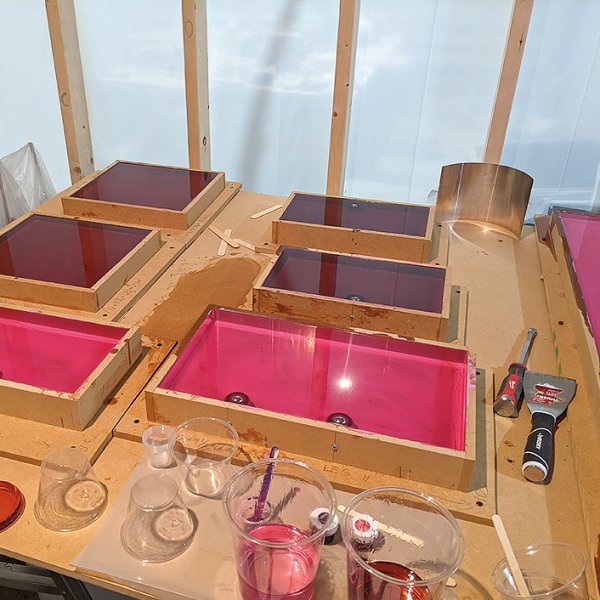Like Candy
Like Candy
As an undergraduate focused on sculpture at Kansas City Art Institute in Missouri, Ian Alistair Cochran learned to work with a vast array of materials: wood, metal, glass, clay. But it was resin that eventually kept a hold on his imagination, with its malleability and clarity of form that allows for endless exploration of color and light. Now, with a studio in Chicago, Cochran is known for transforming resin into startlingly slick, see-through pieces of furniture and other objects that evoke gemstones and lollipops, with their bright bursts of color and meticulously molded forms.
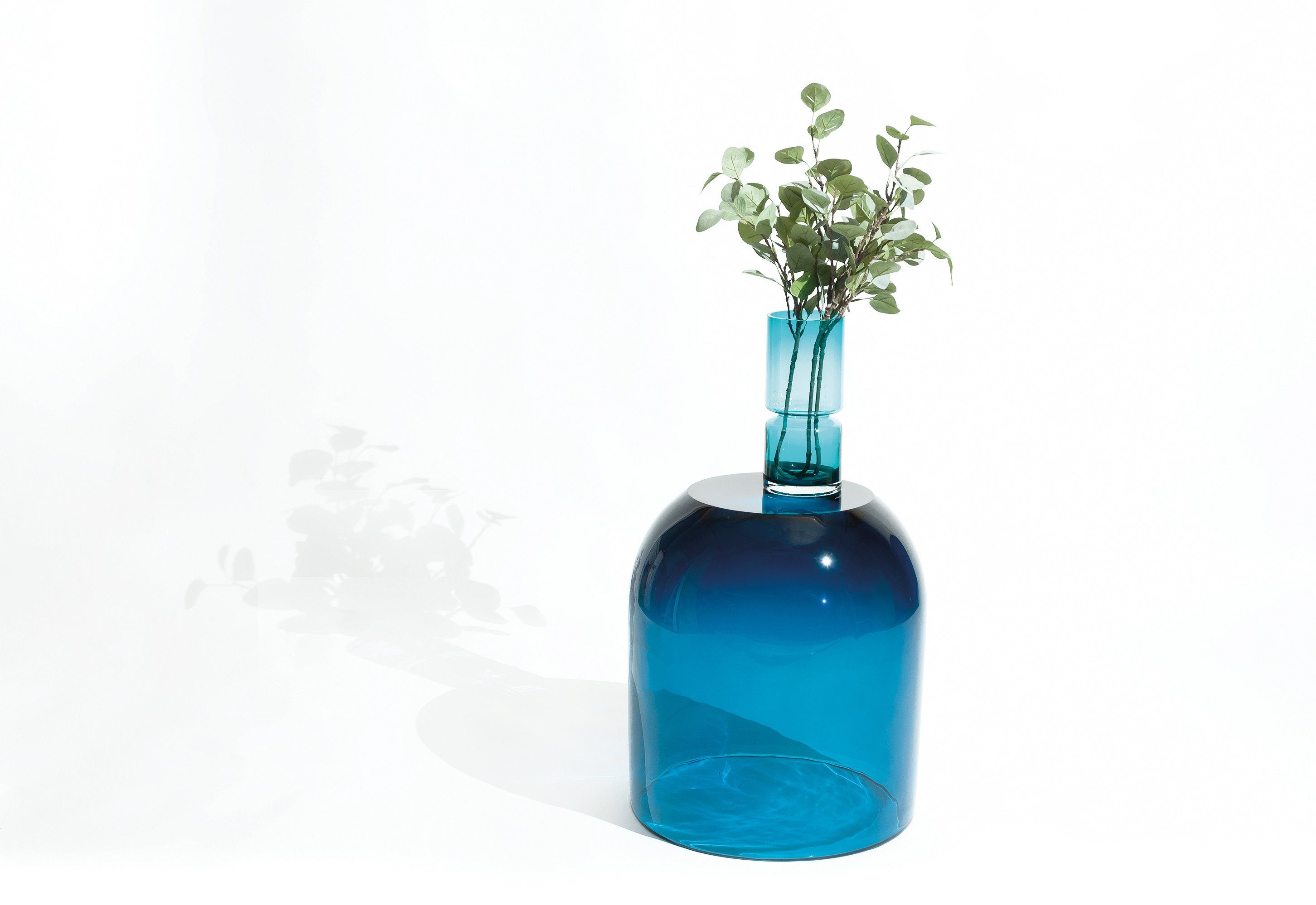
“There’s something always alluring about transparent objects—the way that humans interact with them just feels different,” Cochran says. “I want to highlight the ways resin can bend light and alter the surroundings, kind of be there and not there.”
In 2018, while working at the studio for designer Fernando Mastrangelo, Cochran produced his first cast-polyurethane piece, a coffee table constructed of five solid resin slabs—dyed to a glossy violet sheen—and a piece of cut colorless acrylic. As in traditional Japanese wood joinery, each slab notches into another without hardware so that the near-ovular acrylic tabletop rests on, and shows off, gracefully angled supports. This interlocking technique, which causes the resin to reflect against itself and creates rippling layers of color and shadow, has become Cochran’s signature. Over the past five years, he has produced shelves, side tables, chairs, mirrors, and more that seem effortless in their clean, streamlined appearance.
“Every joint is sort of part of the visual,” Cochran says. “The overlapping of shapes can compound the colors to give you different shades; they’re going to pull color from the full depth of the piece to the edge, and then that’s going to be a different color than the surface that you’re looking through.”
Fluid and sensitive to changes in temperature, resin—a kind of plastic—is notoriously tricky to work with. It’s prone to trapping bubbles as it’s getting poured, and it shrinks as it cures. Cochran learned how to manage these quirks firsthand while working at Atta Inc., a custom-fabrication company based in New York, after graduating in 2013. He’d had some experience with resin while in school, but at Atta, he learned how to manipulate it to suit interior designers’ needs, whether that meant fitting it with other materials or casting it to yield unique visual effects. In 2017 he joined Mastrangelo’s studio as a fabricator and received an opportunity to produce a piece for the designer’s showroom. That six-piece coffee table debuted in In Good Company, an exhibition of emerging artists that Mastrangelo curated, where it cast subtle shades of purple on the concrete floor.
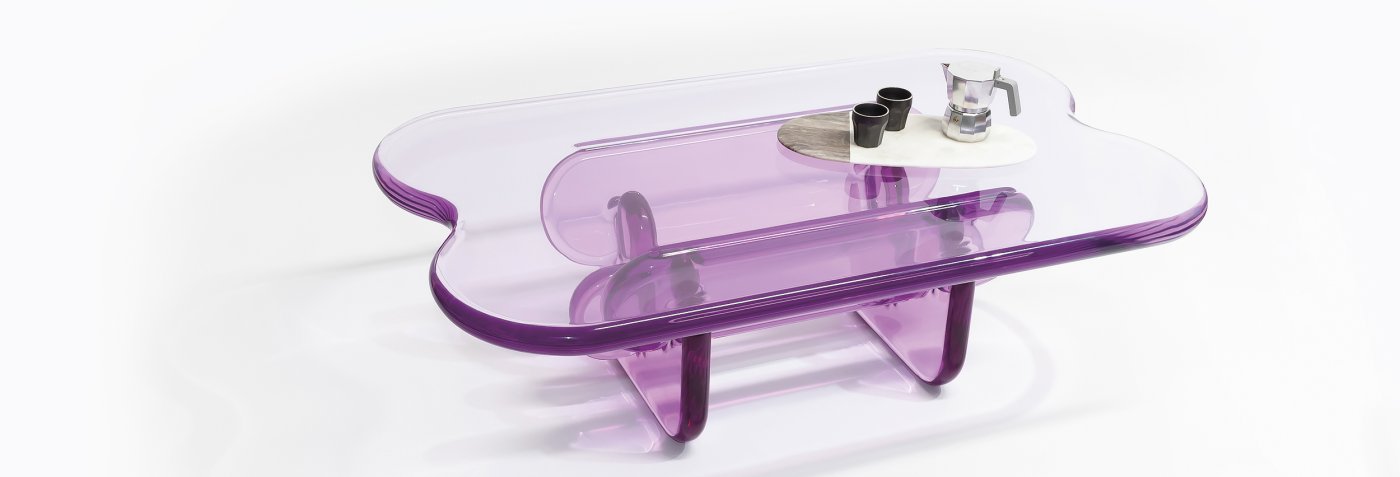
Plump Coffee Table, polyurethane, 16 x 32 x 54 in. Photo by Ian Alistair Cochran.
Titled Plump for its pleasantly rounded forms, the table marked the start of Cochran’s series of that same name. Each piece is playful, available in bold colors such as topaz yellow or mantis green, yet refined and polished to deliver a purity of form. The Plump Chair consists of a semicircular seat intersecting a C-shaped slab that serves as both legs and a backing; the Plump Console combines three narrow resin pieces into a minimalist, arched shelving unit.
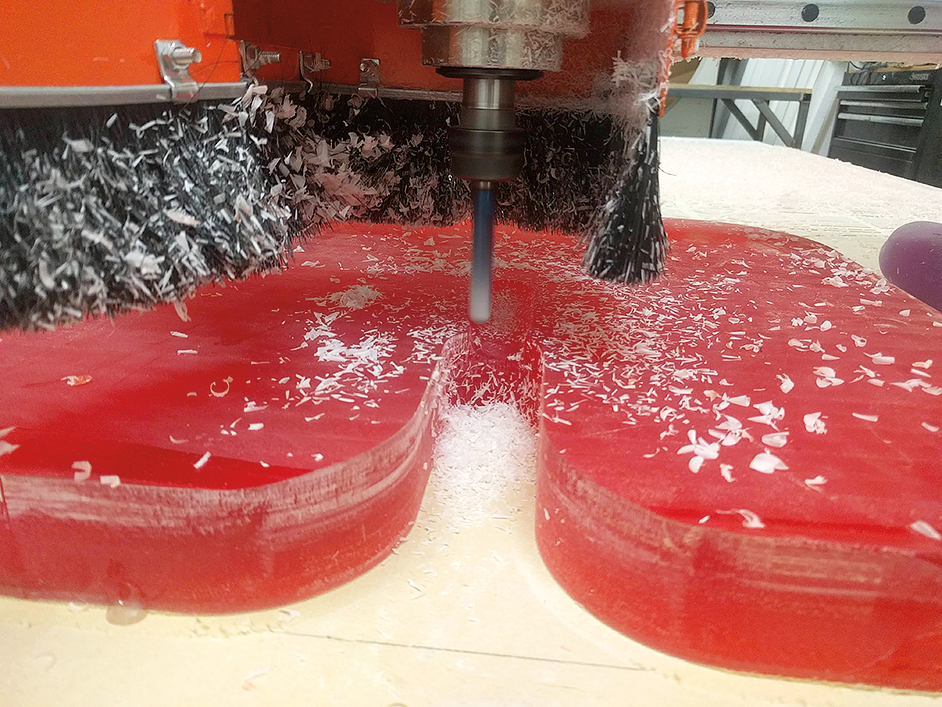
Another series, titled Dew Drops, is a deeper exploration of light and shape. Comprising hollow, domed objects with flattened tops, the glossy structures, also made of polyurethane resin, serve as accent tables or stools. Look closely and you’ll see that each contains an inner dome with a rounded top. As these surfaces diverge from each other, they bend light to mesmerizing effect. “It’s my first exploration of light moving through the piece,” Cochran says. “This combination of the domed inside and outside with this flattened area gives [the work] these edges and curves that sort of bounce and reflect inside of the piece, in a way that’s a little bit strange to look at.”
Popular as a material for DIY art projects, resin has recently developed a bad rap as a medium for cheap, kitschy decor: epoxy-resin tables have become fodder for memes, and TikToks of trendy resin pours have been criticized for their wastefulness. Cochran is among a generation of artists who are taking resin to new heights to demonstrate the material’s versatility and elegance.
In Paris, the South Korean designer Wonmin Park has produced a line of soft-toned tables and chairs made of two or three slabs, appropriately titled Haze; the airy, dreamy objects seem to radiate from within. Christine Espinal and Alvaro Ucha Rodriguez, two designers with the buzzy New York studio Lichen, recently debuted an elegant sconce that combines Espinal’s experiments with resin and Rodriguez’s lighting skills. When turned on, it emits a beautifully diffused, light-green beam. Smaller yet are the handmade jewelry pieces by Matthew Smith in Asheville, North Carolina—modernist, geometric creations that pair colored, cast resin with sterling silver or wood.

Various cast resin samples. Photo by Ian Alistair Cochran.
The challenge that remains, however, is one of sustainability: traditional petroleum-based resins are not biodegradable, and they can also emit harmful vapors prior to being cured. Cochran continues to use traditional resin because he wants to ensure that his work will last. Other artists are trying new approaches to the material. Smith has been experimenting with a nontoxic casting resin made from soybeans and peanuts; in the Hudson Valley, designer Kim Markel uses recycled resin to produce gauzy, translucent tables and chairs that seem plucked from a fairy tale.
Among the ideas Cochran is tinkering with now are creating a series of resin light fixtures and making objects through cold-casting, which involves mixing resin with a metal powder. Those projects will involve a lot of learning and problem-solving—which Cochran accepts as part of the nature of the work. “Really, resin can be finicky or resistant to certain things you want to do with it,” he says. “I guess there’s a little bit of being humble to the idea that you might not understand every element of what’s going on.”
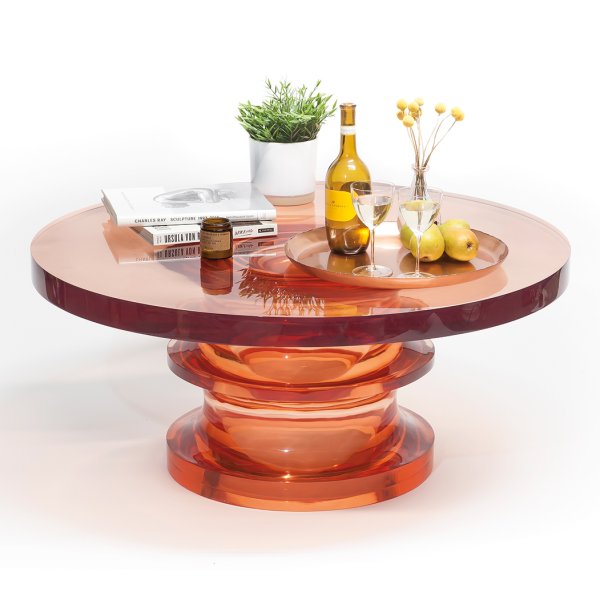
Cochran’s Echo III Coffee Table, solid cast polyester, 20 x 40 x 40 in. Photo by Ian Alistair Cochran.
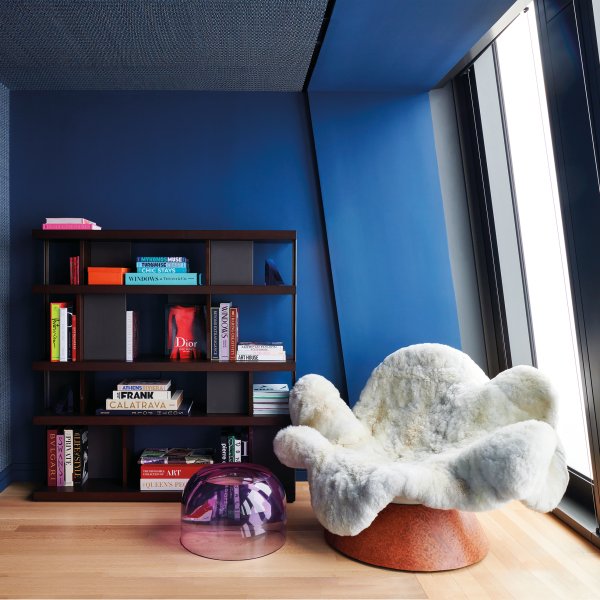
This small resin table was featured in a collaboration between Elle Decor and the design firm Fox-Nahem. Photo by Kelly Marshall.



